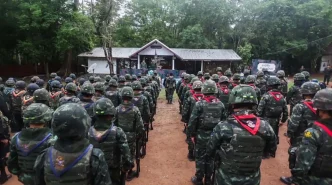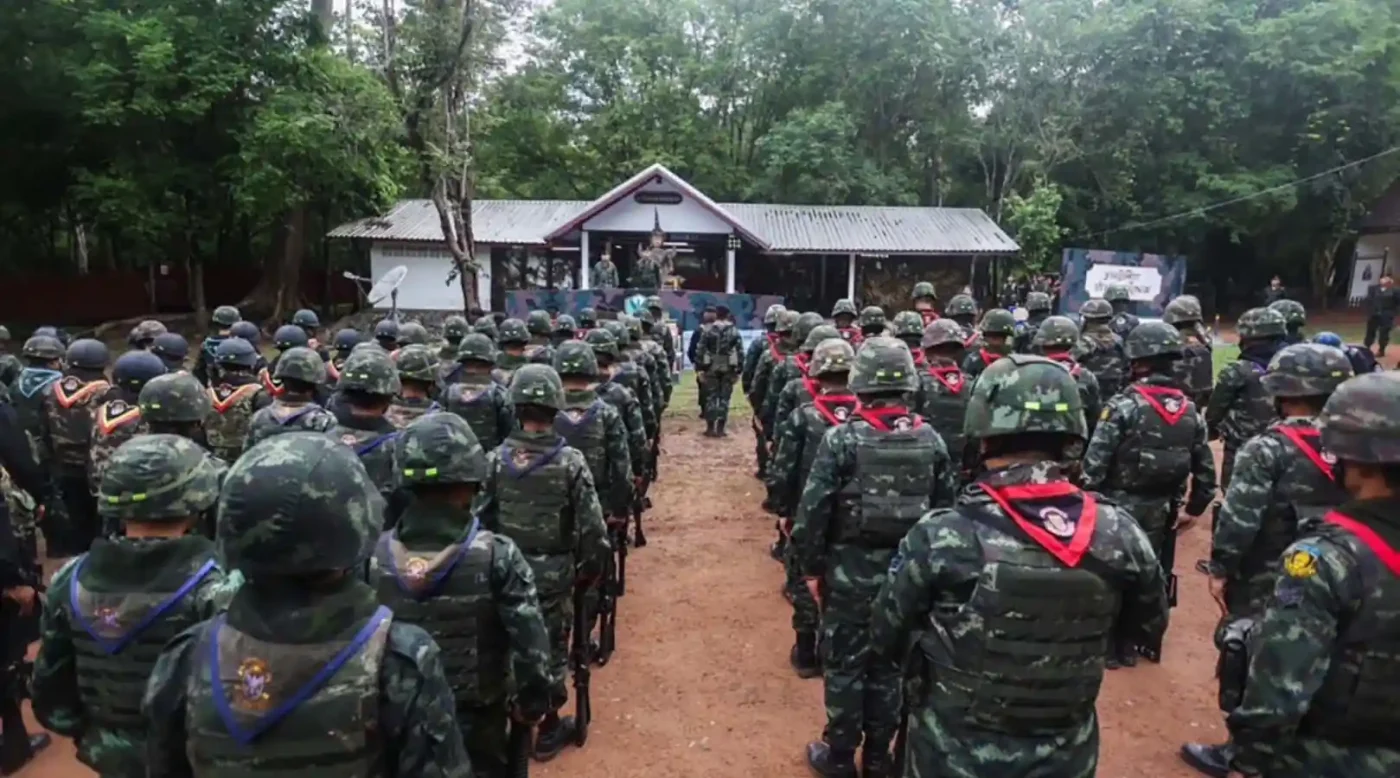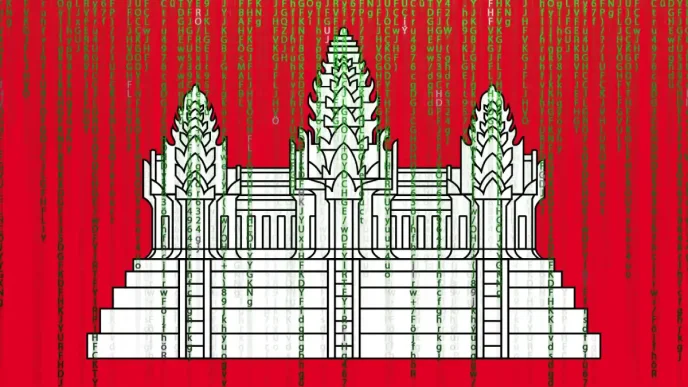Thailand has called for bilateral negotiations with Cambodia to resolve a long-standing border dispute, as Cambodia prepares to submit a case to the International Court of Justice (ICJ) over contested territory near the Preah Vihear Temple. The move comes amid heightened tensions in the region, with both nations seeking to assert sovereignty over overlapping claims along their shared border, a flashpoint that has historically led to diplomatic friction and sporadic violence.
Thailand’s Push for Dialogue
Thai officials have emphasized the importance of direct talks to address the disputed border area, arguing that a negotiated settlement could prevent further escalation. The Thai Foreign Ministry issued a statement earlier this week urging Cambodia to engage in discussions under the framework of the Thai-Cambodian Joint Boundary Commission (JBC), a bilateral mechanism established to tackle such issues. “We believe that dialogue is the most effective way to achieve a peaceful and mutually beneficial resolution” said a spokesperson for the ministry.
The disputed territory, particularly around the Preah Vihear Temple—a UNESCO World Heritage Site—has been a contentious issue since the ICJ ruled in 1962 that the temple itself belongs to Cambodia. However, the surrounding land remains unresolved, with both countries claiming overlapping areas. Thailand’s latest call for talks reflects a desire to avoid international adjudication, which could potentially result in a binding decision not in its favor.
Analysts suggest that Thailand’s insistence on bilateral negotiations may also be driven by domestic political considerations. With nationalist sentiments often running high over border issues, the Thai government faces pressure to demonstrate a firm stance while avoiding the perception of conceding ground. A negotiated outcome could provide a face-saving solution, allowing both sides to claim progress without the risks associated with an ICJ ruling.
Cambodia’s ICJ Strategy
Meanwhile, Cambodia appears determined to pursue legal recourse through the ICJ, signaling a lack of confidence in bilateral talks yielding a favorable result. Cambodian officials have indicated they are compiling evidence and legal arguments to support their claim over the disputed territory, with a formal submission to the court expected in the coming months. “We remain committed to resolving this issue through international law and ensuring our sovereignty is respected” said a senior official from Cambodia’s Ministry of Foreign Affairs.
The decision to approach the ICJ follows years of intermittent negotiations with Thailand, which have often stalled due to political changes, mutual distrust, and domestic pressures on both sides. Cambodia’s leadership views the court as a neutral arbiter capable of delivering a definitive resolution, especially given the precedent of the 1962 ruling. However, the process is likely to be lengthy and could further strain relations if either side perceives the outcome as unjust.
Observers note that Cambodia’s move may also be influenced by regional dynamics. With growing Chinese investment and influence in Cambodia, some speculate that Phnom Penh feels emboldened to take a firmer stance on territorial issues, knowing it has economic and diplomatic backing. However, no direct evidence links China’s role to the current border dispute, and Cambodian officials have framed their actions as a matter of national interest rather than external influence.
Historical Context of the Dispute
The Thailand-Cambodia border dispute dates back decades, rooted in colonial-era demarcations and post-independence nationalist movements. The Preah Vihear Temple, perched on a cliff in the Dangrek Mountains, became a symbol of contention after the ICJ’s 1962 decision awarded it to Cambodia, a ruling that sparked outrage in Thailand at the time. While the temple itself is no longer in question, the adjacent 4.6 square kilometers of land remain disputed, with both countries maintaining military presence in the area during periods of heightened tension.
Clashes in 2011 resulted in casualties on both sides, drawing international concern and prompting calls for de-escalation. Since then, efforts to resolve the issue through the JBC have yielded limited progress, with disagreements over maps, troop withdrawals, and development projects in the area complicating negotiations. The border region, while strategically significant, also holds cultural and economic value, with potential for tourism and resource extraction if a resolution is reached.
For local communities living near the border, the dispute has tangible impacts. Restricted movement, security concerns, and sporadic violence have disrupted daily life, particularly for those reliant on cross-border trade. Both governments have occasionally pledged to prioritize the welfare of these communities, yet progress remains slow, leaving many residents caught in a geopolitical limbo.
Regional and International Implications
The border dispute carries implications beyond the bilateral relationship, potentially affecting stability in Southeast Asia. The Association of Southeast Asian Nations (ASEAN), of which both Thailand and Cambodia are members, has historically advocated for peaceful resolution of disputes among its members. However, ASEAN’s principle of non-interference limits its ability to mediate effectively, leaving the issue largely to the two nations or international bodies like the ICJ.
Neighboring countries, including Laos and Vietnam, are monitoring the situation closely, wary of any spillover effects. A protracted conflict or unfavorable ICJ ruling could embolden other territorial claims in the region, where overlapping borders and historical grievances remain unresolved in several areas. Moreover, the involvement of the ICJ may set a precedent for how similar disputes are handled, potentially encouraging or deterring other nations from seeking international adjudication.
From a global perspective, the dispute highlights the challenges of balancing national sovereignty with international law. While the ICJ’s decisions are binding, enforcement often depends on the goodwill of the parties involved, as the court lacks direct mechanisms to compel compliance. If Cambodia’s case proceeds, the outcome could test the efficacy of international legal frameworks in resolving deeply entrenched territorial conflicts.
Potential Paths Forward
As Cambodia prepares its ICJ submission, Thailand’s call for bilateral talks offers a parallel avenue for resolution, though mutual trust remains a significant barrier. Experts suggest that confidence-building measures—such as joint border patrols, cultural exchanges, or agreements on shared economic development in the disputed area—could pave the way for more substantive negotiations. However, such steps require political will on both sides, which has often been lacking in the past.
Public sentiment in both countries adds another layer of complexity. In Thailand, nationalist groups have historically mobilized against perceived concessions on border issues, while in Cambodia, the government has leveraged the dispute to bolster its image as a defender of national sovereignty. Any resolution, whether through talks or the ICJ, will need to navigate these domestic pressures to avoid backlash.
Financial considerations also play a role. Legal proceedings at the ICJ involve significant costs, with Cambodia likely to incur expenses in the range of millions of Cambodian Riel (estimated at US$500,000 or more) for legal representation and documentation. Thailand, too, would face similar expenditures if it engages fully in the case. These costs, while substantial, pale in comparison to the potential economic benefits of a resolved border, which could unlock tourism revenue—potentially worth billions of Thai Baht (US$ millions) annually—and cross-border trade opportunities.
Looking Ahead
As the situation unfolds, the Thailand-Cambodia border dispute remains a test of diplomacy, international law, and regional cooperation. Whether through bilateral talks or an ICJ ruling, the path to resolution will require careful navigation of historical grievances, domestic politics, and geopolitical interests. For now, the international community watches closely, hoping for a peaceful outcome that prioritizes stability over conflict.
Amid the legal and diplomatic maneuvers, the voices of border communities serve as a reminder of the human cost of unresolved disputes. As one Thai villager near the contested area poignantly noted, “We just want to live without fear of fighting. A line on a map shouldn’t decide our future.” Their aspirations, alongside the broader quest for peace, underscore the urgency of finding a lasting solution.
















